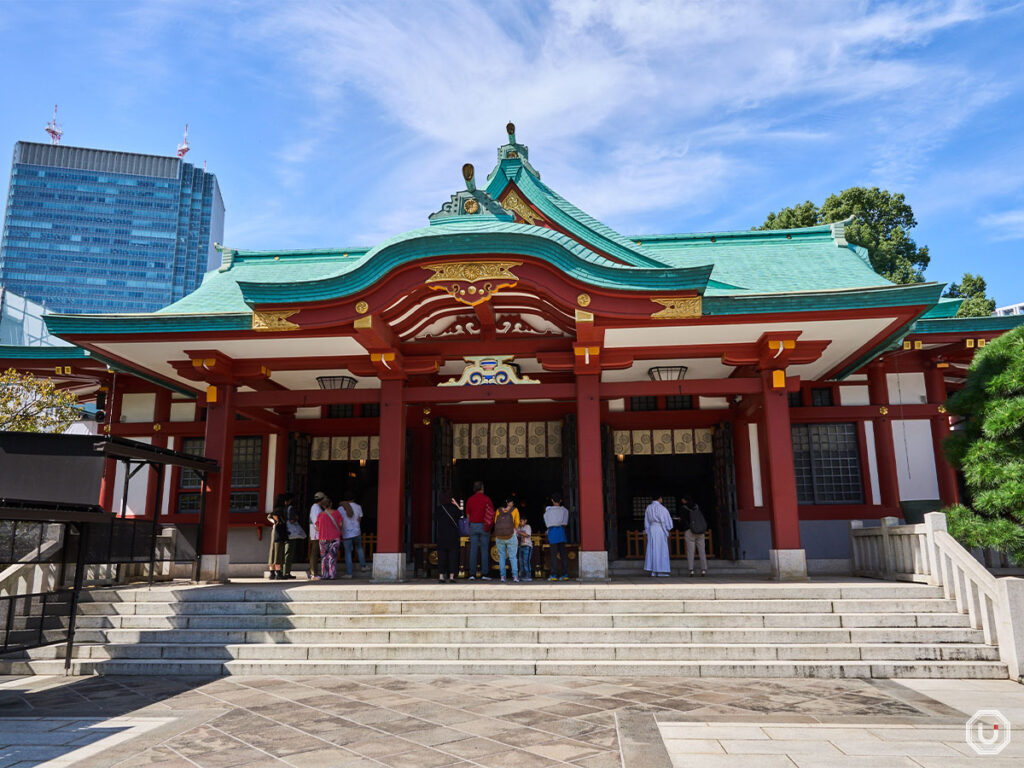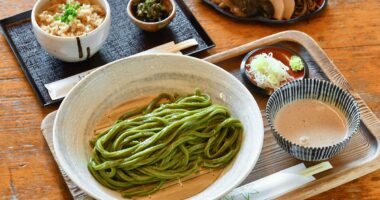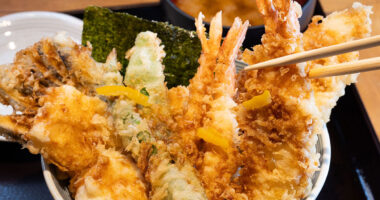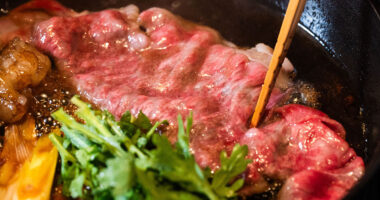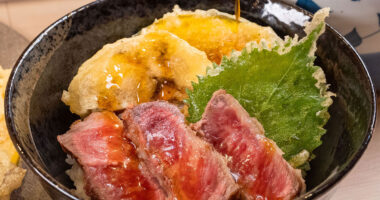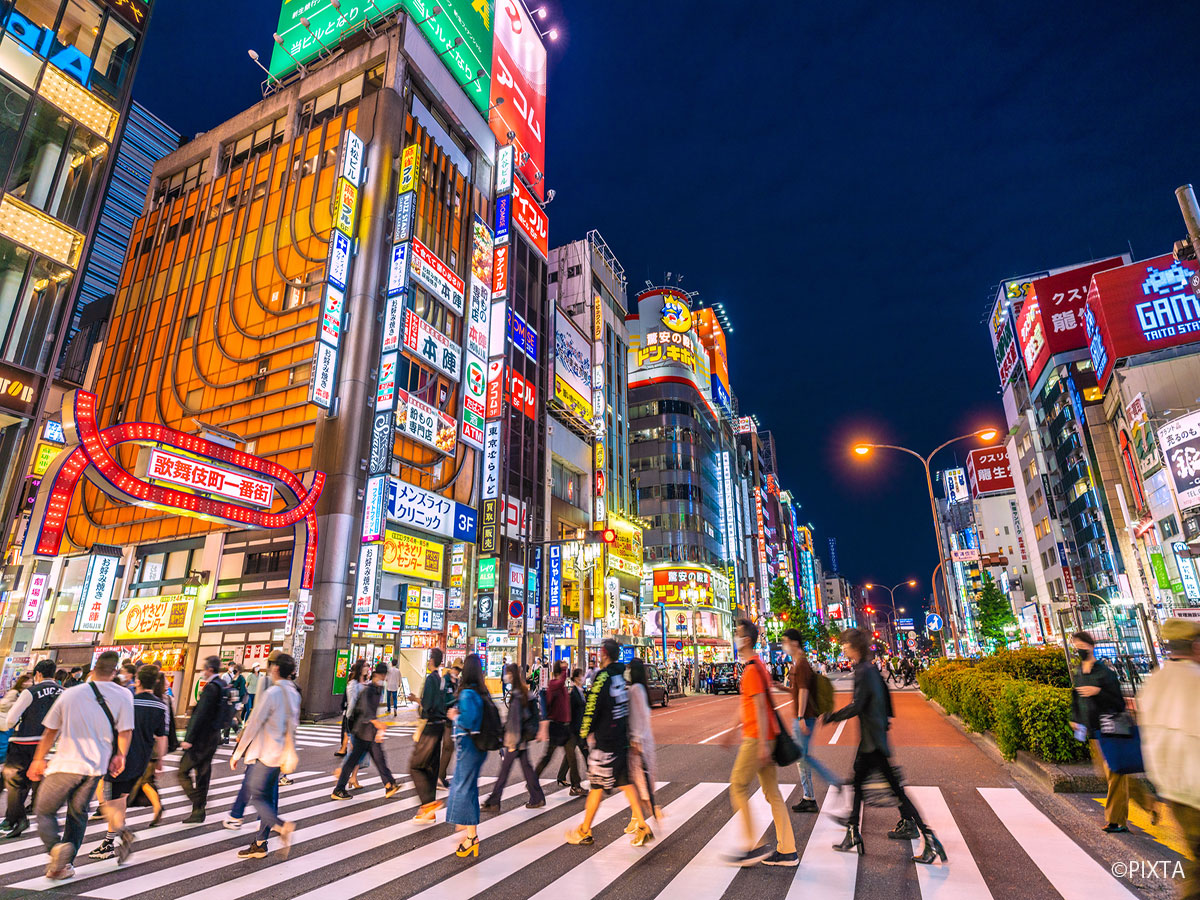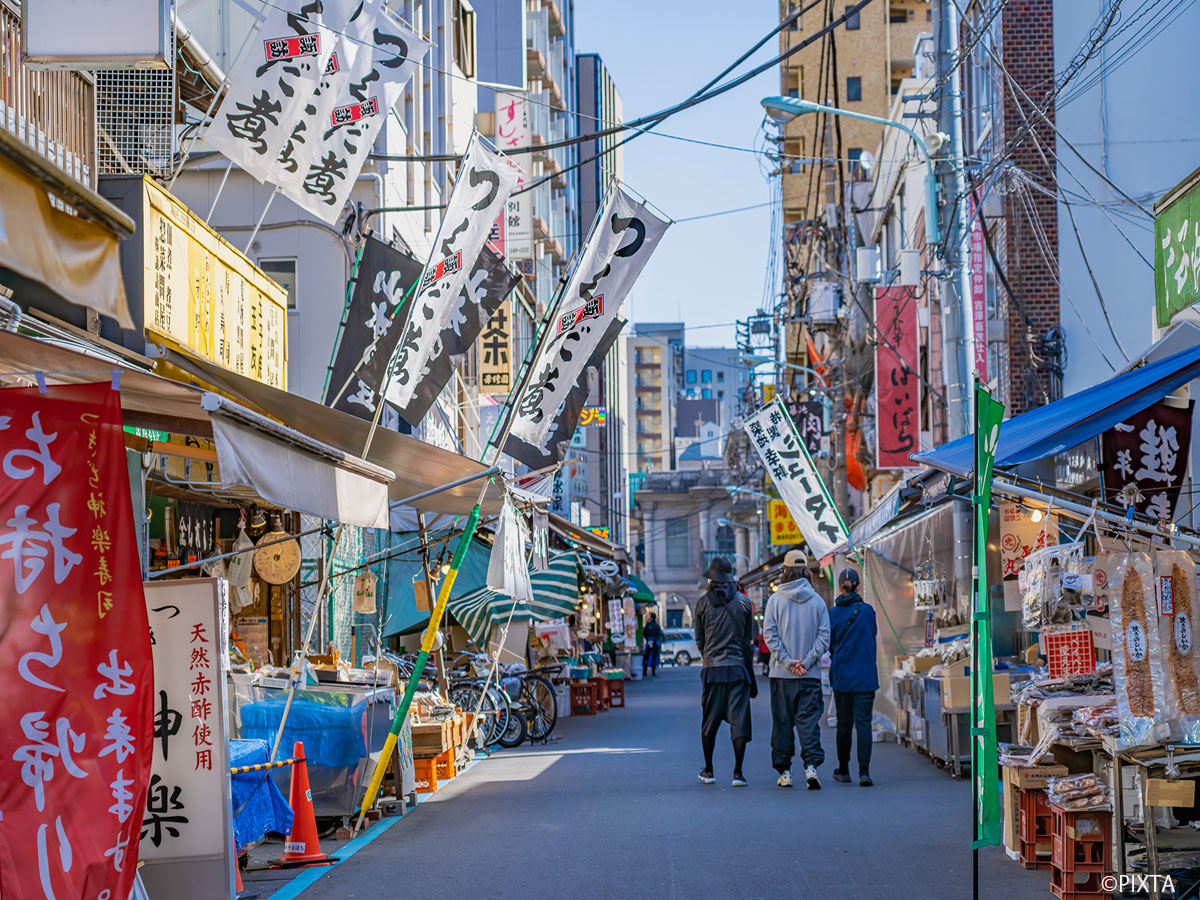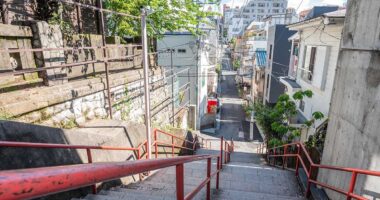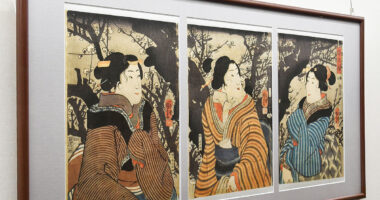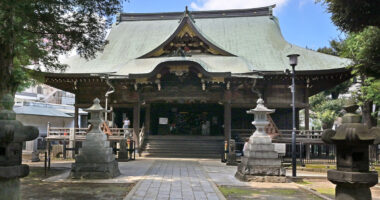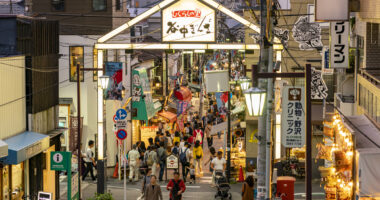Located just a 3-minute walk from Akasaka Station and Tameike-sanno Station in Tokyo, Hie Shrine is a historic site established in the Kamakura period (1185–1333). Known affectionately as “Sannō-san,” it enshrines the deity Ōyamakui no Kami.
The shrine is believed to bless visitors with household safety and other good fortunes, making it a popular destination for worshippers and tourists alike.
Walk through the great torii gate to the shrine grounds
Hie Shrine is situated on a slightly elevated hill and offers multiple routes for access.
The easiest way is via the Sannō Bridge route. As you walk along Sotobori-dōri Avenue from Tameike-sanno Station, you’ll see the large torii gate. Pass through it and climb the stairs to reach the shrine grounds. An escalator is also available, so visitors with heavy luggage can ascend comfortably.
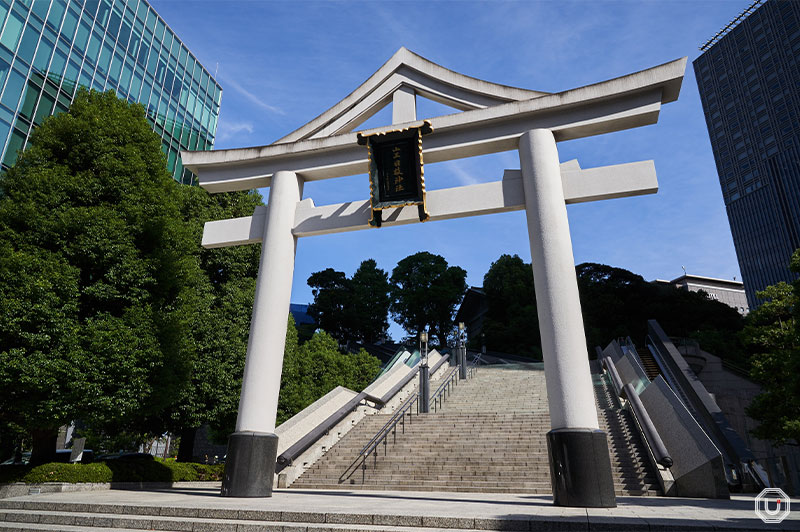
The grand torii gate at Sanno Bridge
Alternatively, you can approach from the Nishi-Sandō (west approach) route by passing through another impressive torii gate visible when walking from Akasaka-Mitsuke Station.
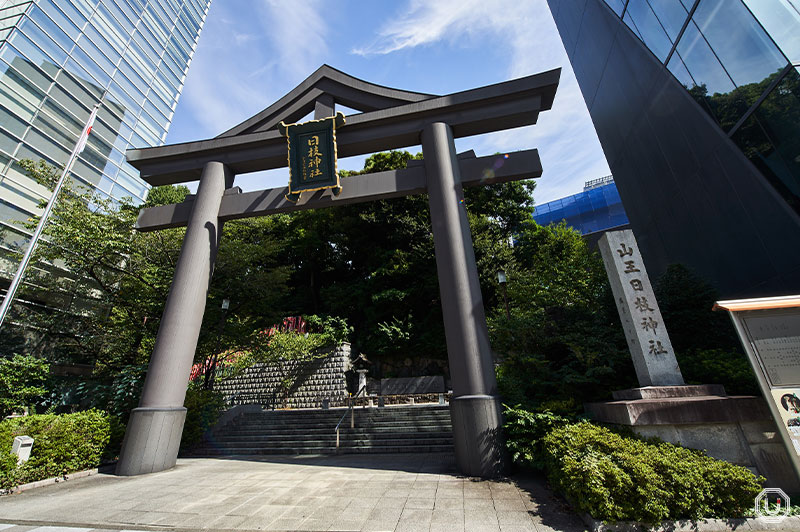
The torii gate at Nishi-Sandō
For those who wish to follow the traditional path, however, the main approach starts further east and connects to the Sanno Otokozaka slope. This ensures a proper visit from the front.
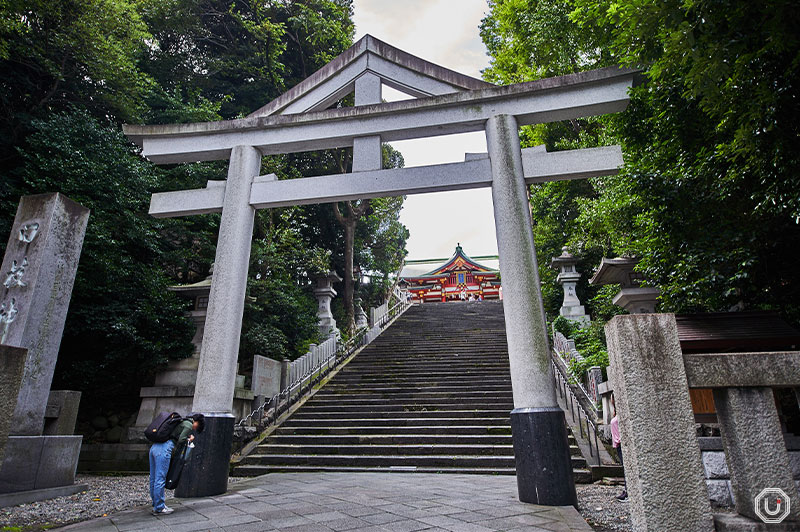
The torii gate at Sanno Otokozaka
Once you climb the stone steps, the striking red Zuishinmon Gate comes into view. Named after the statues of the Zuijin attendant deities guarding it, this gate is an iconic feature of the shrine.
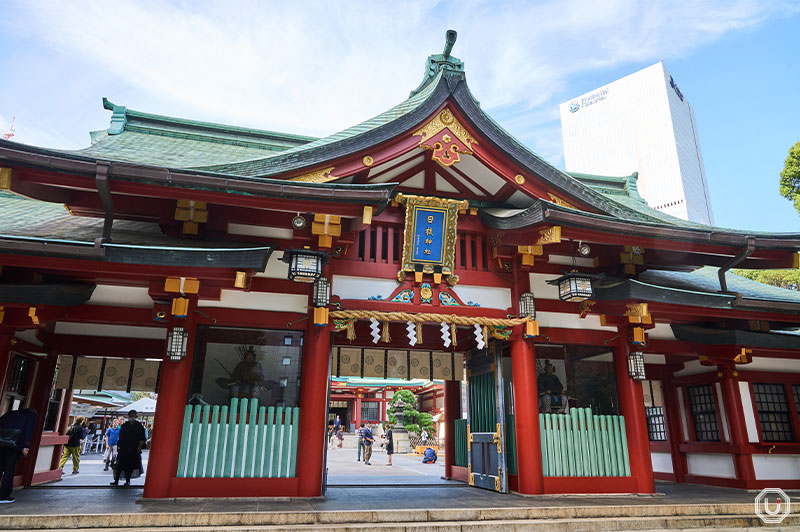
Zuishinmon Gate
The spacious grounds of Hie Shrine often host weddings and ceremonies for Shichi-Go-San (a traditional Japanese rite of passage and festival day for children). If you’re lucky enough to witness a wedding, it might bring you a bit of extra happiness too!
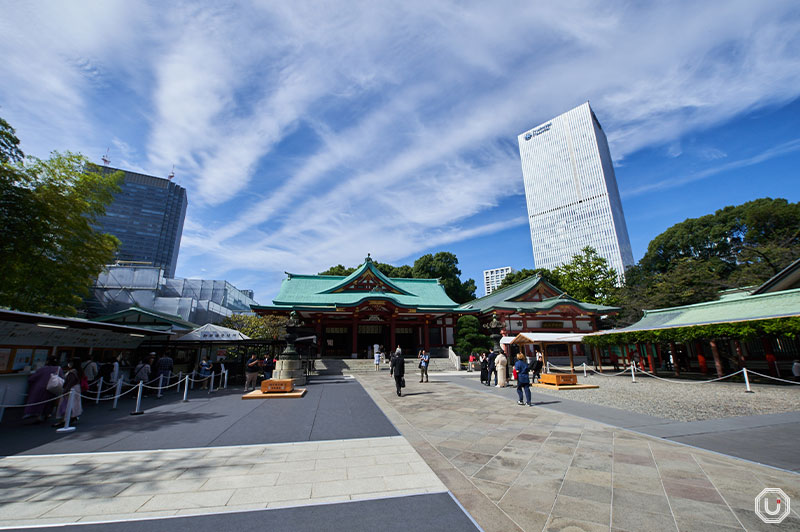
Once you’re within the shrine grounds, start your visit by paying your respects at the main hall.
The proper style for worship is “two bows, two claps, one bow.” First, place your offering into the saisenbako (offertory box). Then, bow deeply twice, clap your hands twice, and press your palms together in prayer. Finally, bow deeply one more time to conclude.
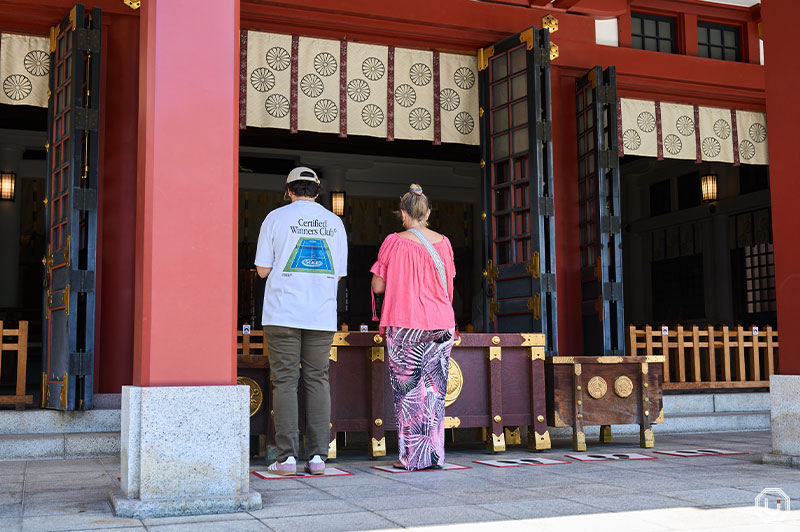
While many shrines feature guardian komainu lion-dogs at their entrances, Hie Shrine is unique for having a pair of guardian monkeys instead. These sacred monkeys, called masaru (literally “god’s monkeys”), are associated with the shrine’s deity, Oyamakui no Kami.
The name masaru is triply auspicious in the Japanese language. To begin with, its pronunciation suggests two different meanings: a phrase meaning “evil departing” and a verb meaning “winning” or “success.” In addition, since saru (monkey) can also be read as en, a homophone of which means “relationships,” the masaru symbolize blessings for good connections. Be sure to pay your respects when you see them.
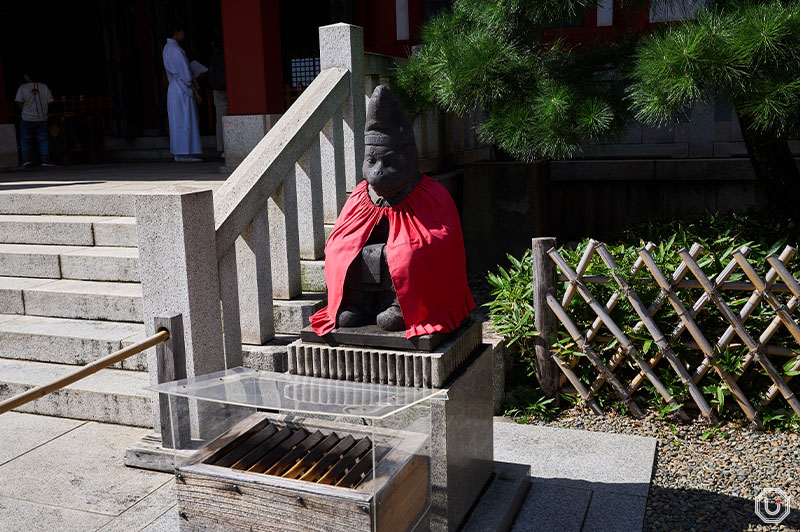
Masaru guardian monkey
Within the shrine grounds, you will find three auxiliary shrines: Sannō Inari Shrine, Yasaka Shrine, and Sarutahiko Shrine.
Sanno Inari Shrine enshrines the deity of prosperous business. Yasaka Shrine is dedicated to Susanoo no Mikoto, the god of matchmaking, warding off misfortune, and family prosperity. Sarutahiko Shrine venerates Sarutahiko no Kami, the god of good fortune and business success.
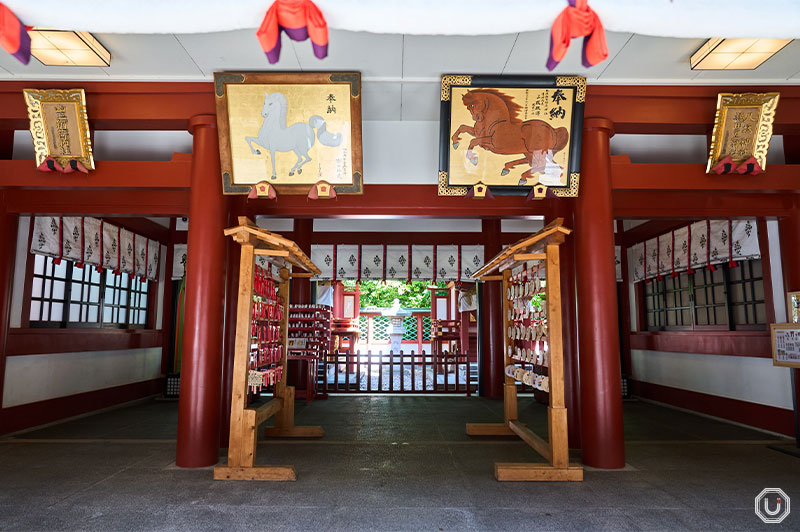
The vibrant torii-lined path is a popular photo spot
The path leading to the Sanno Inari Shrine behind the main worship hall is flanked by rows of vivid red torii gates. This picturesque staircase is a favorite photo spot for visitors from Japan and abroad, allowing them to create cherished memories of their trip.
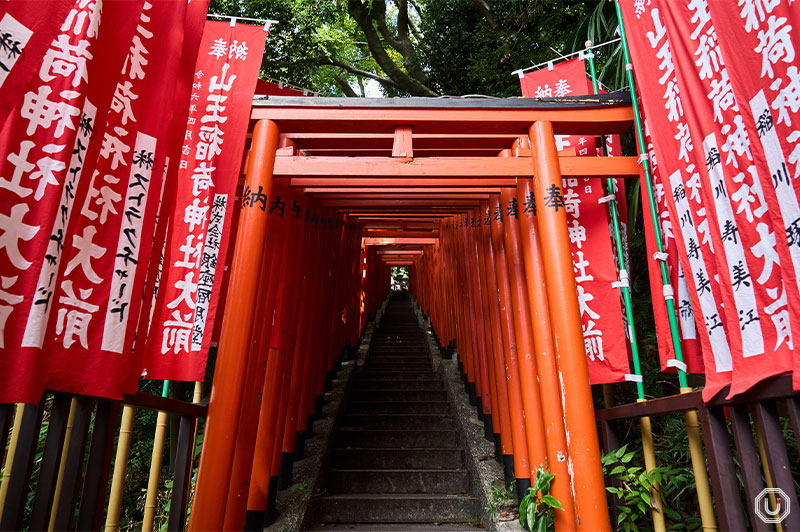
Another point of interest at Hie Shrine is that it offers a variety of omamori (amulets available at Japanese shrines and temples and granting good luck or protection), ofuda (talismans made of paper, wood or cloth and considered to be imbued with the power of the deities), ema (wooden votive plaques on which visitors write their wishes) and other sacred items.
Among the unique offerings is the Sanno Ema, a wooden plaque featuring a festival float from the biannual Sanno Festival, and a miniature torii gate ema for Sanno Inari Shrine.
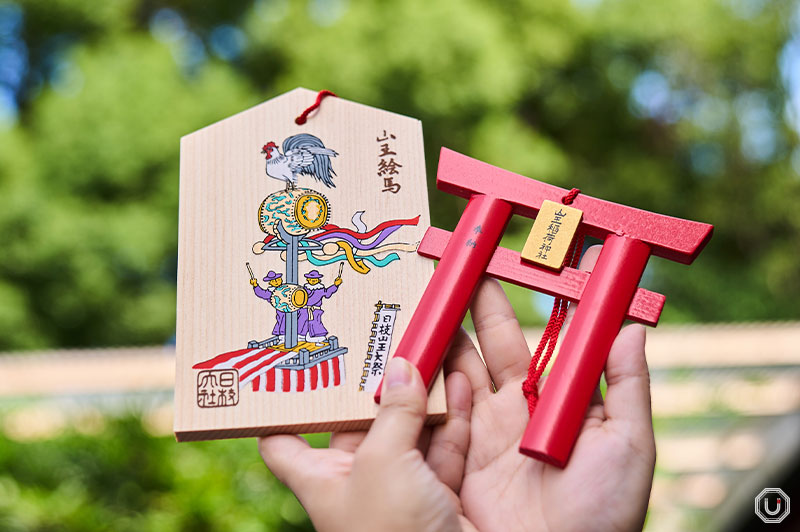
(Left) Sanno Ema 1,000 JPY, (right) Sanno Inari Shrine torii ema 1,000 JPY
Another popular item is the “Gokenzoku Hōnō” (literally “retainer to be dedicated”), an adorable figurine of a fox, the divine retainer (messenger) of the Inari deity enshrined at Sanno Inari Shrine. Traditionally, visitors write their wishes on it and leave it to dedicate it to the shrine, but its charming design also makes it a sought-after keepsake.
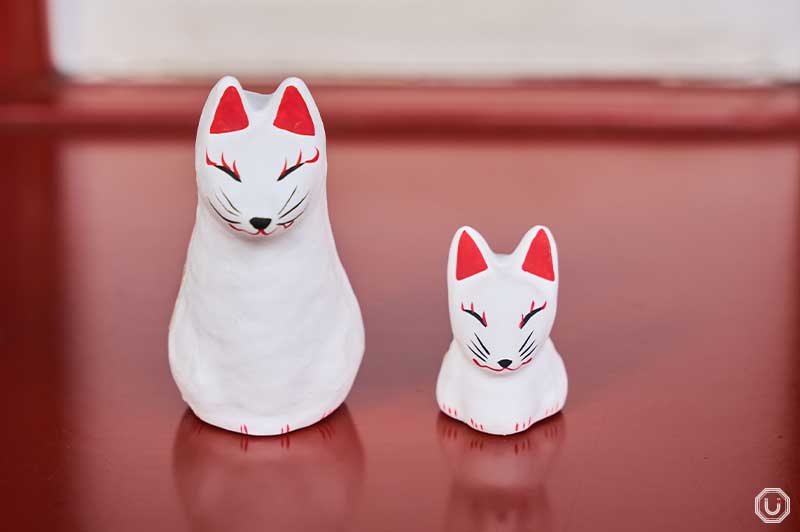
Gokenzoku Hono: Large 1,000 JPY, Small 800 JPY
Many of Hie Shrine’s amulets and memorabilia feature monkey motifs. The “Masaru Omamori,” a plump charm with a cute monkey face, is particularly beloved.
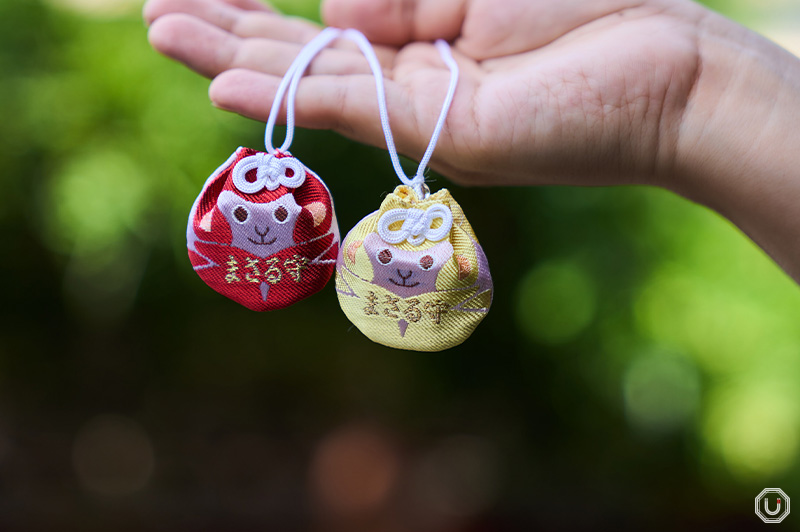
Masaru Omamori (large), 800 JPY
The shrine’s original goshuinchō (a book collecting goshuin, special seals obtained at Japanese shrines and temples as proof of pilgrimage) is another highlight. Adorned with an intricate monkey design that appears when tilted at a certain angle under the light, this fabric-bound keepsake is simple yet elegant.
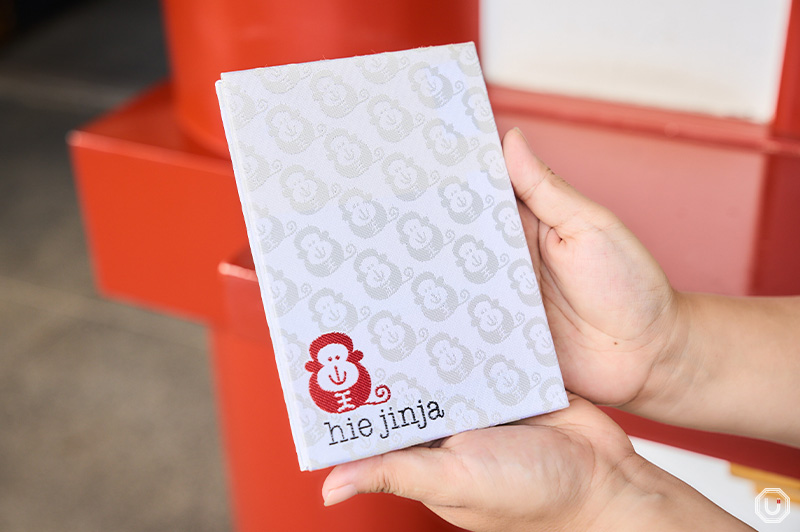
goshuincho 2,000 JPY
Lastly, visitors can collect one of six unique goshuin. These include reprints of historical designs from the Meiji period to the present day, allowing you to choose a stamp from your favorite period.
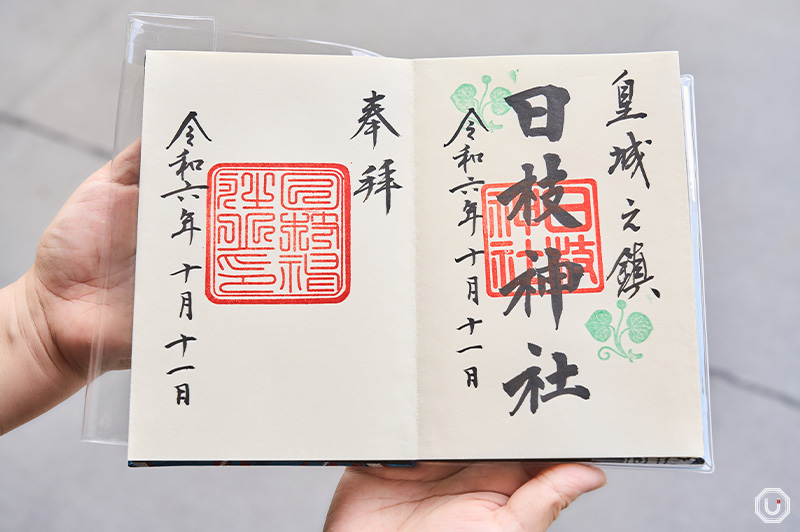
(Left) Goshuin (Meiji Era) 500 JPY, (right) Goshuin (current) 500 JPY
With its rich history and peaceful atmosphere, Hie Shrine offers a unique escape in the heart of Tokyo. Make sure to visit and soak in its serene charm.
Shrine Information
| Name | 日枝神社 Hie Shrine |
|---|---|
| Address | 2-10-5 Nagatachō, Chiyoda-ku, Tokyo
|
| Access |
Akasaka Station 3-minute walk from Exit 2
Tameike-sanno Station 3-minute walk from Exit 7
|
| Phone number | 03-3982-8347 |
| Visiting Hours | 24 hours |
| Sacred Items | 8:00-16:00 |
| Goshuin | 8:00-16:00 |
| Omikuji | 8:00-16:00 |
| Admission fee | Free |
| Official website | https://www.hiejinja.net/ |
| Ohter information |
|
※The information in this article is current as of November 2024.
